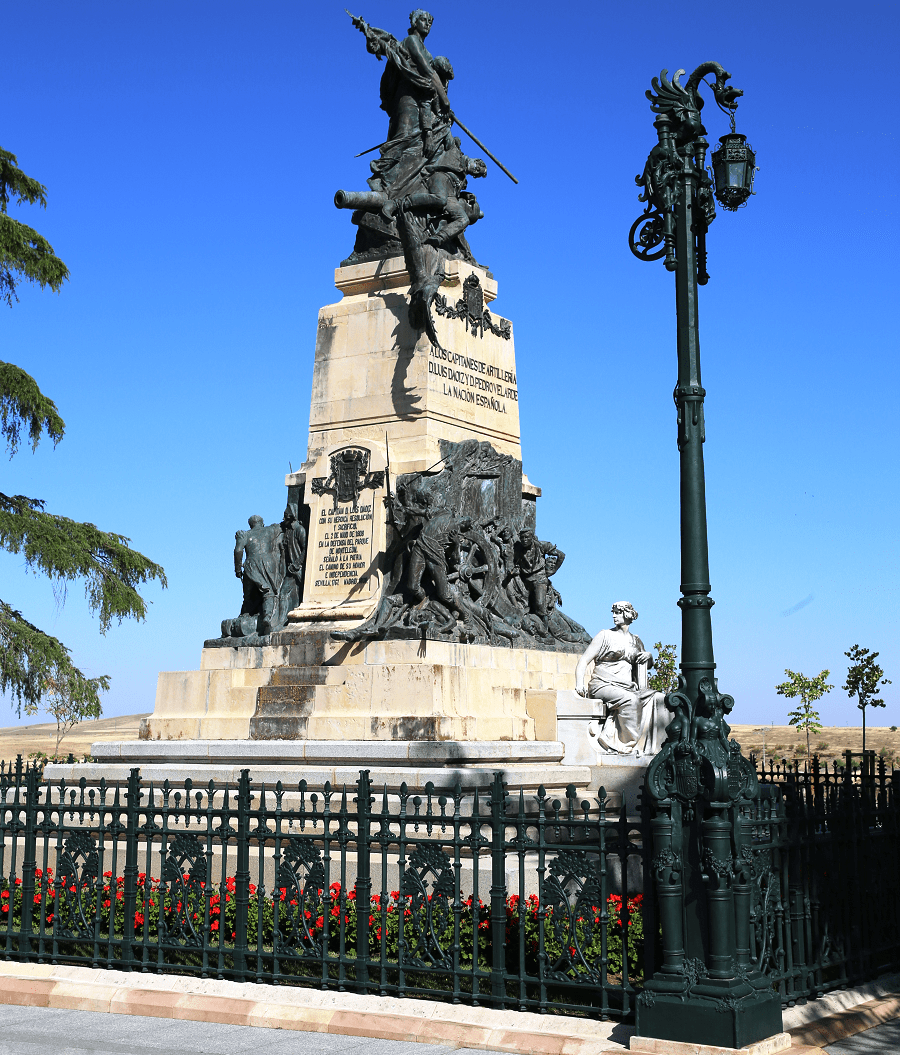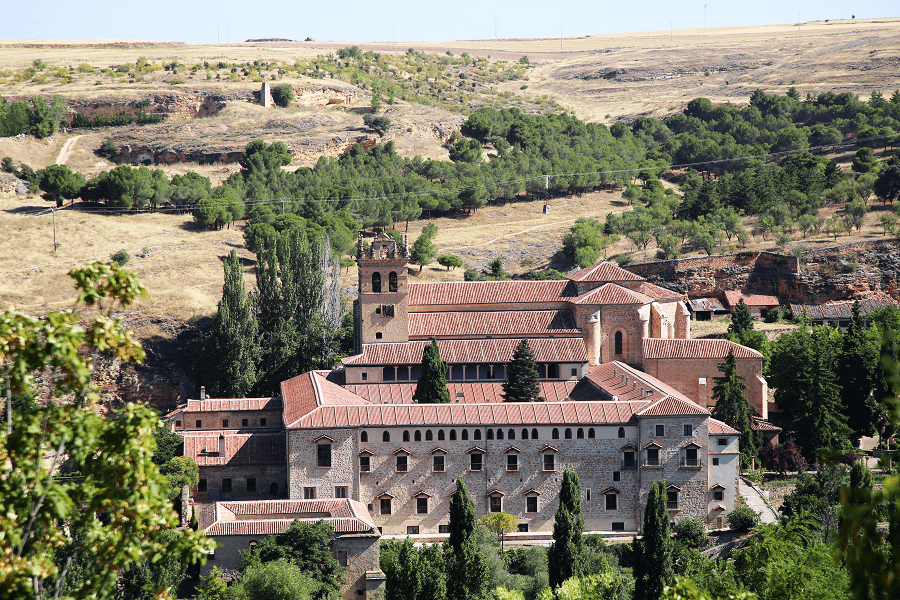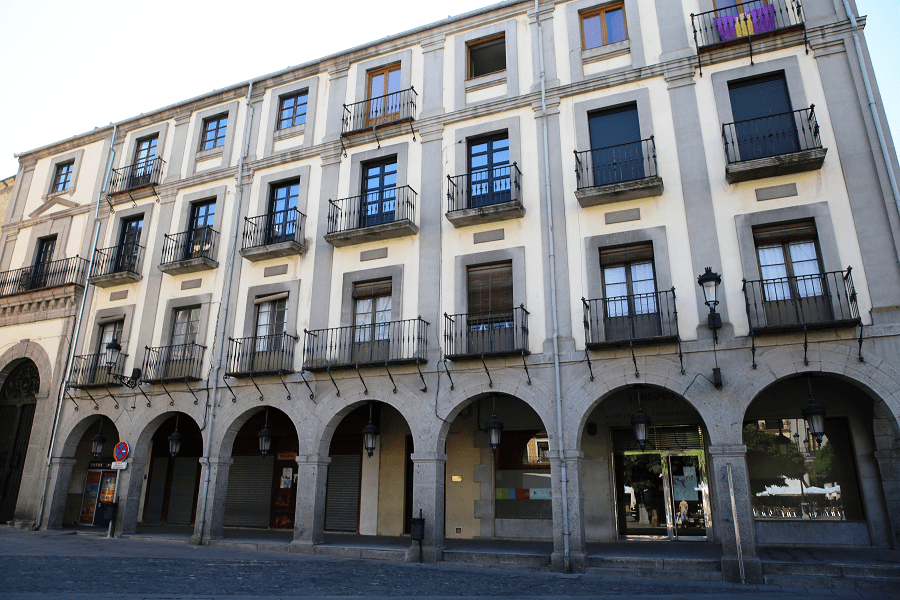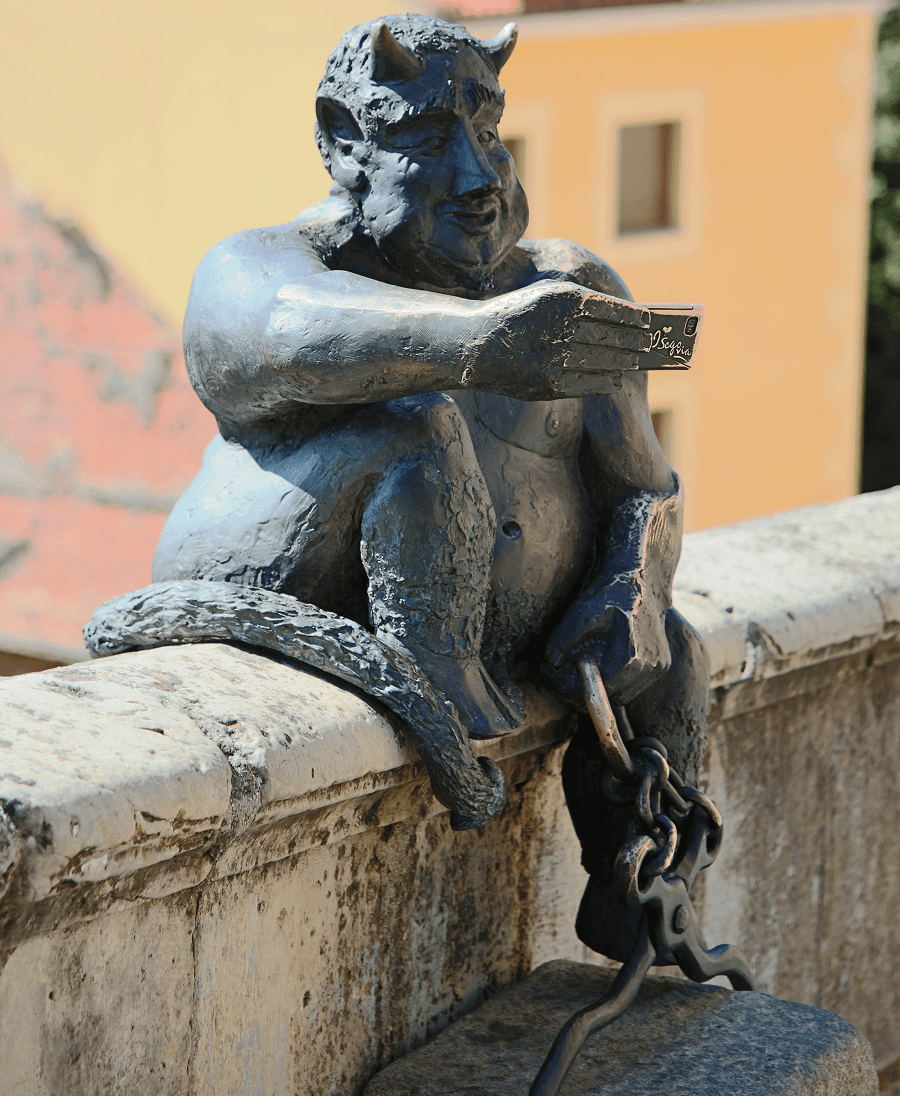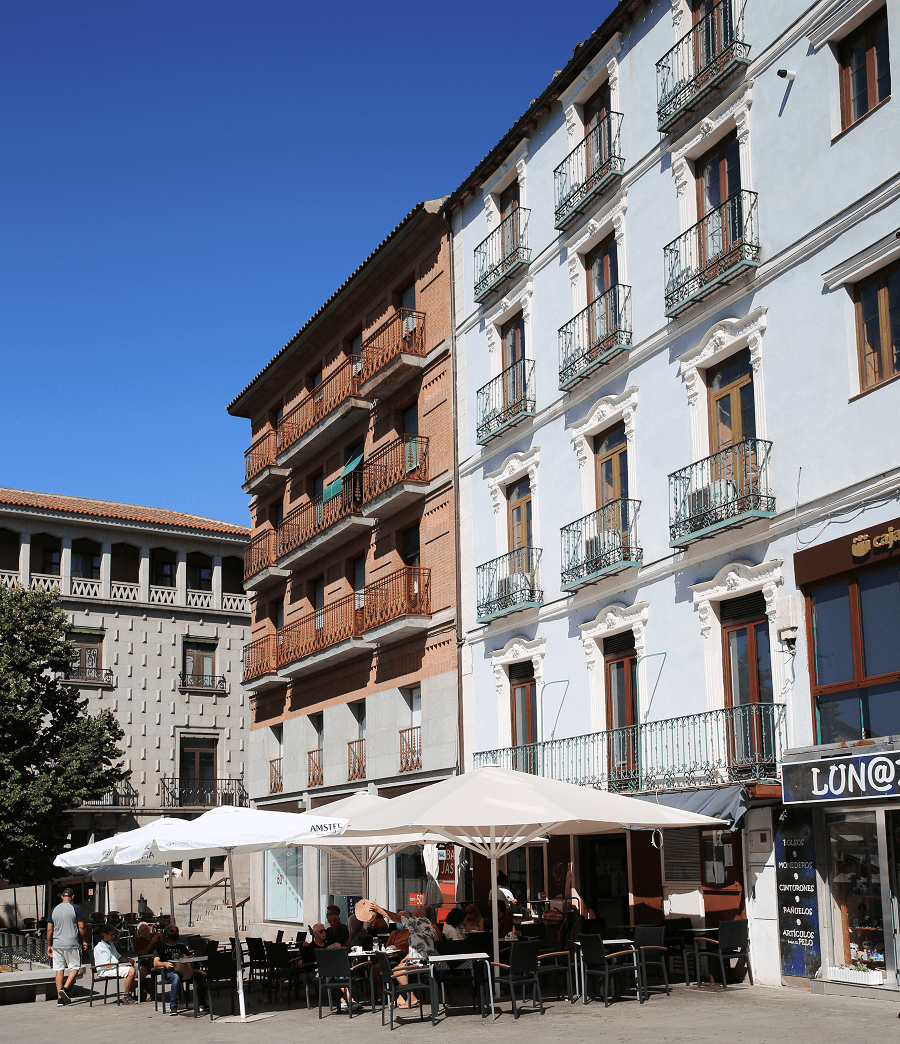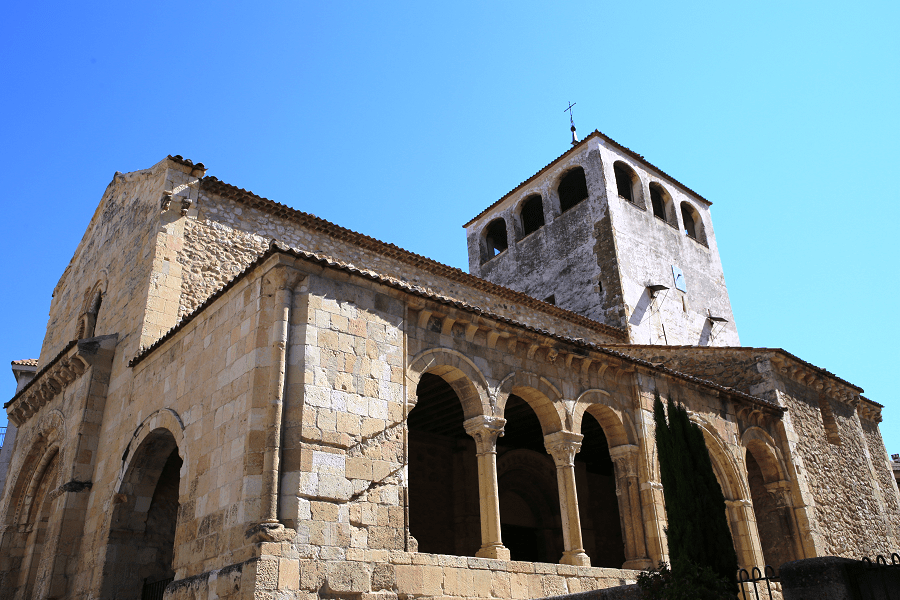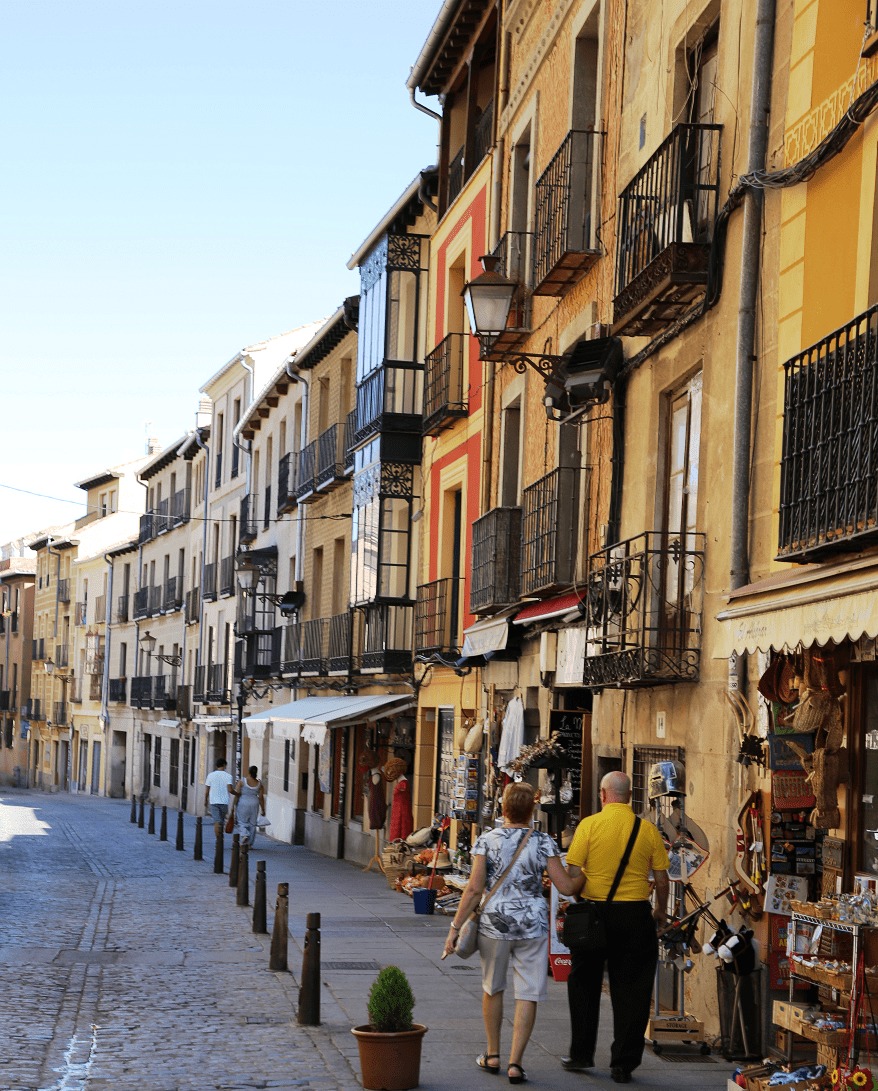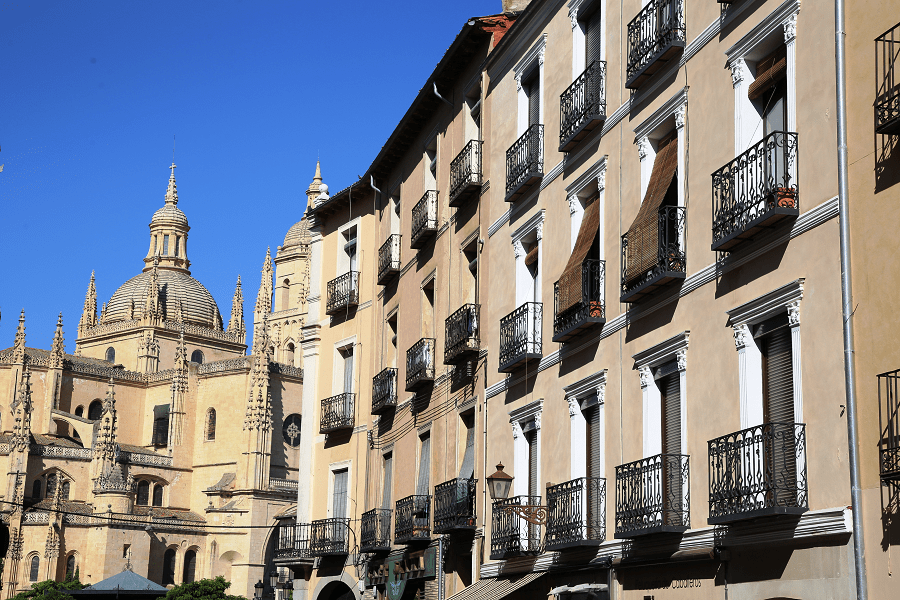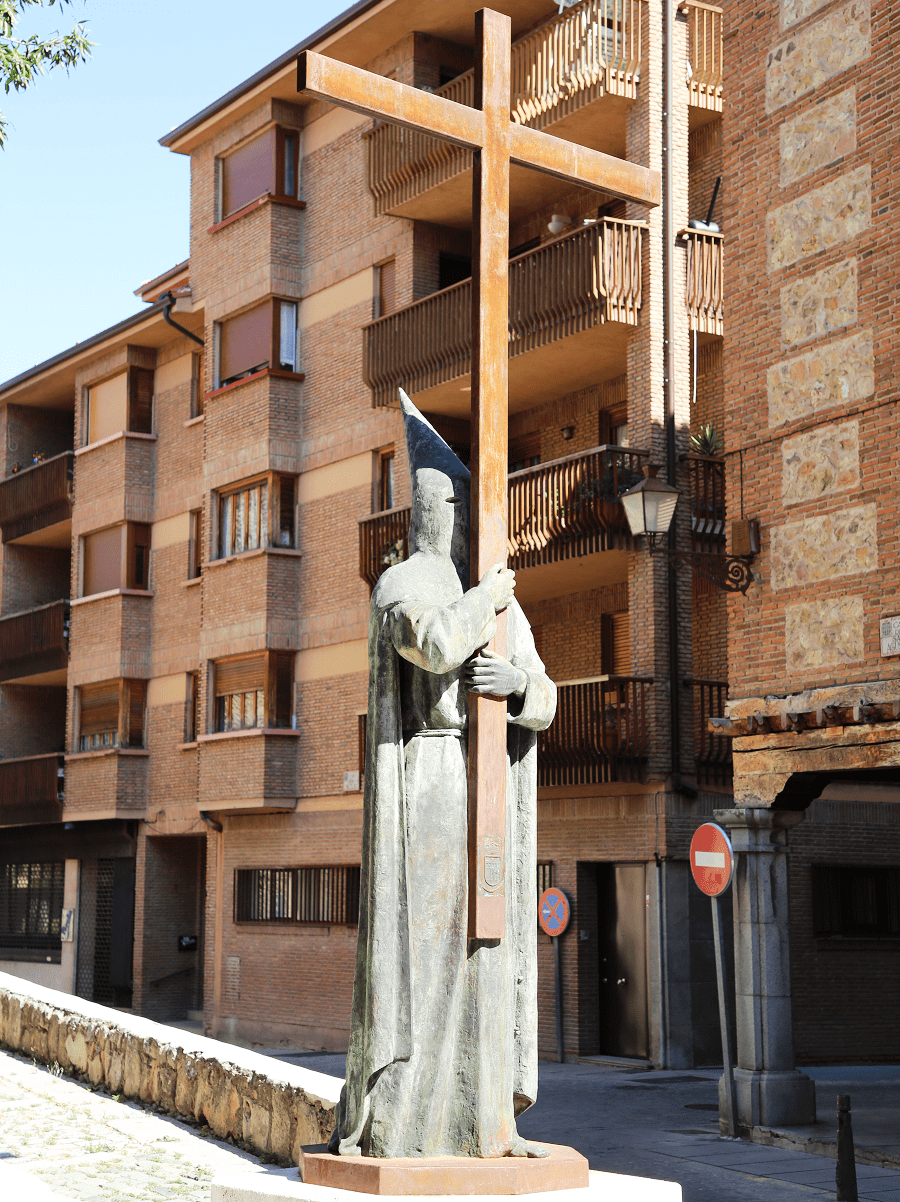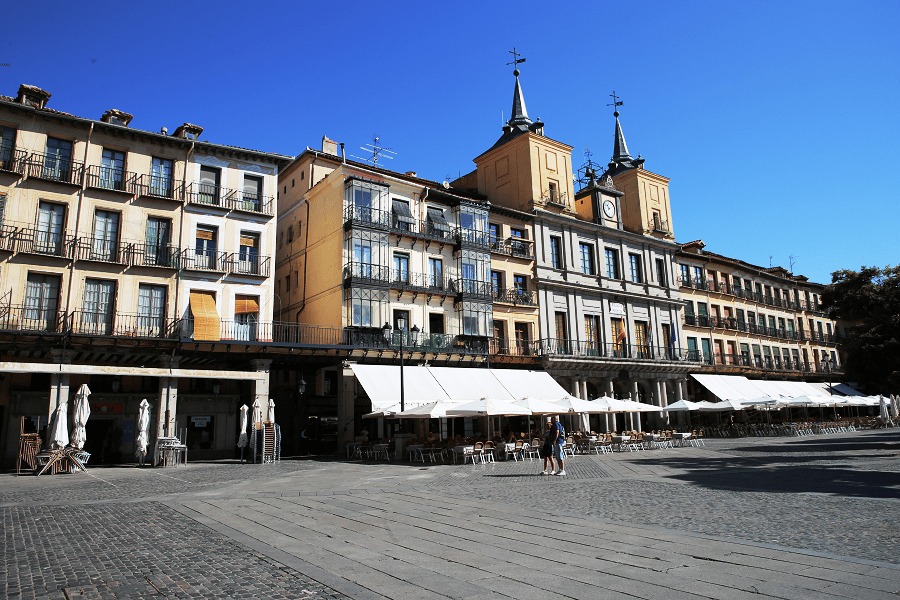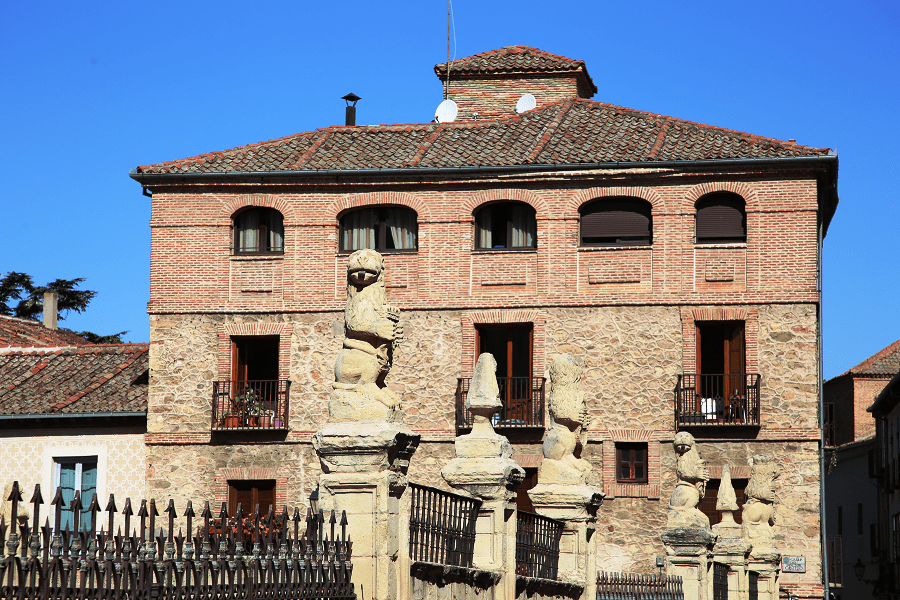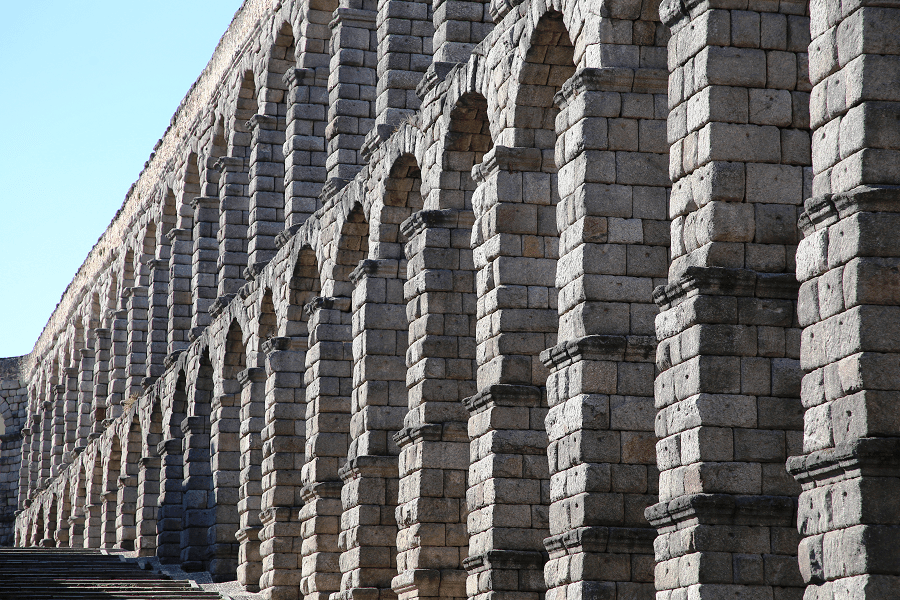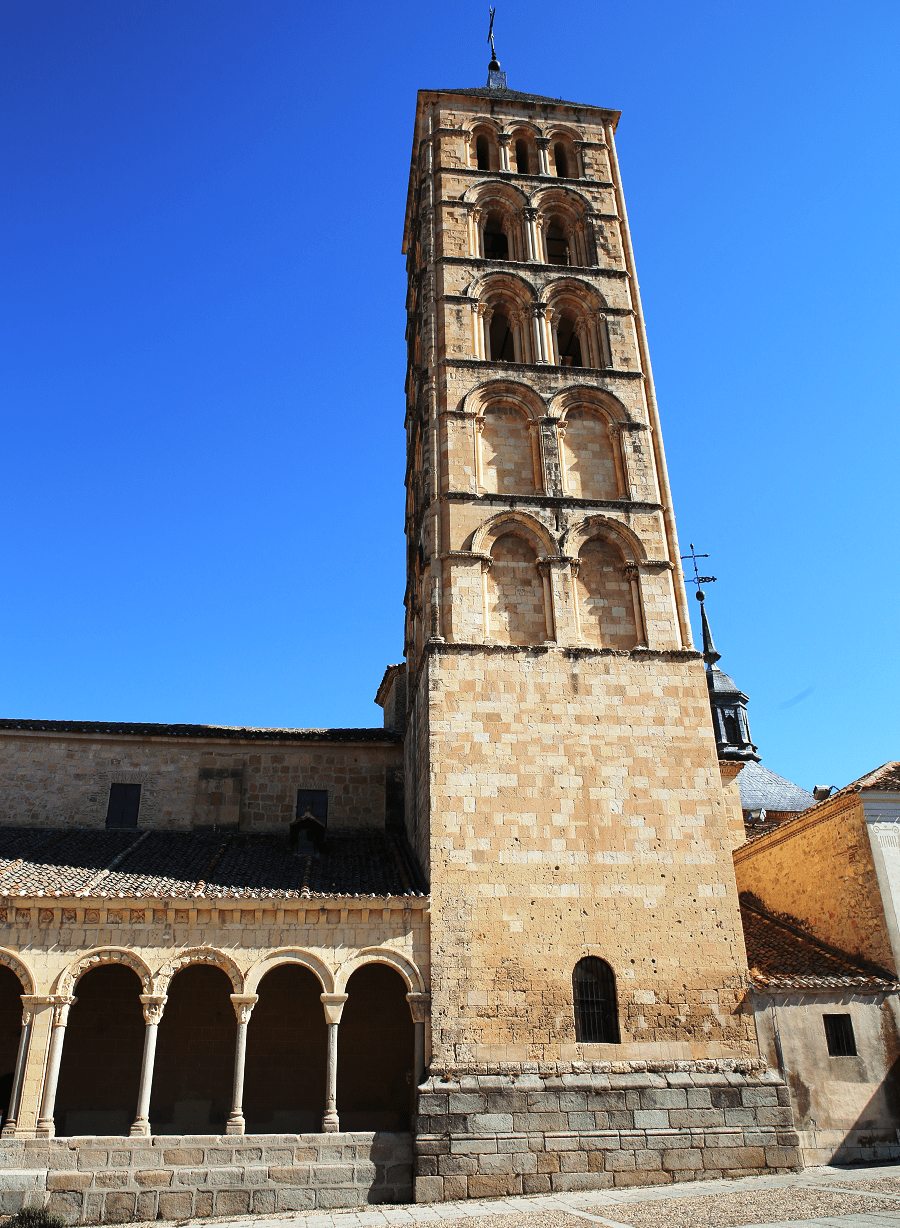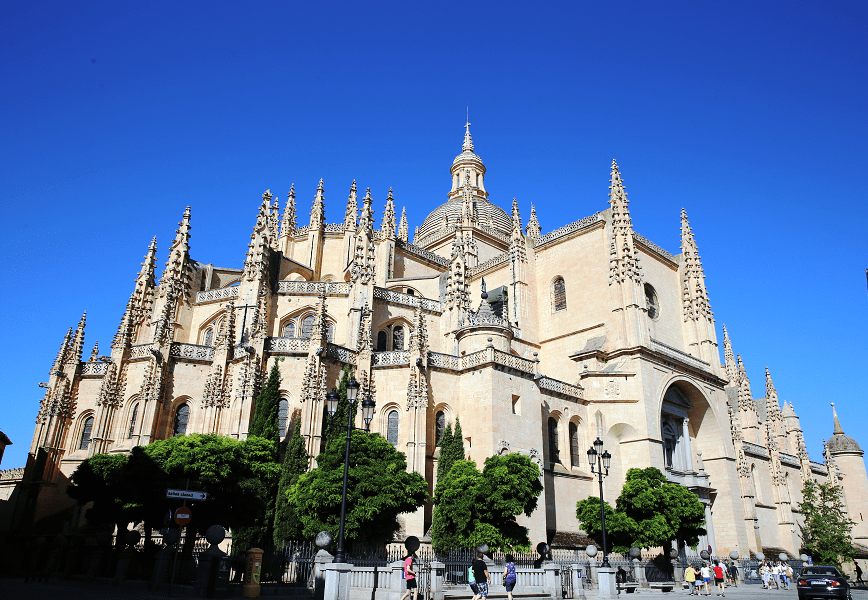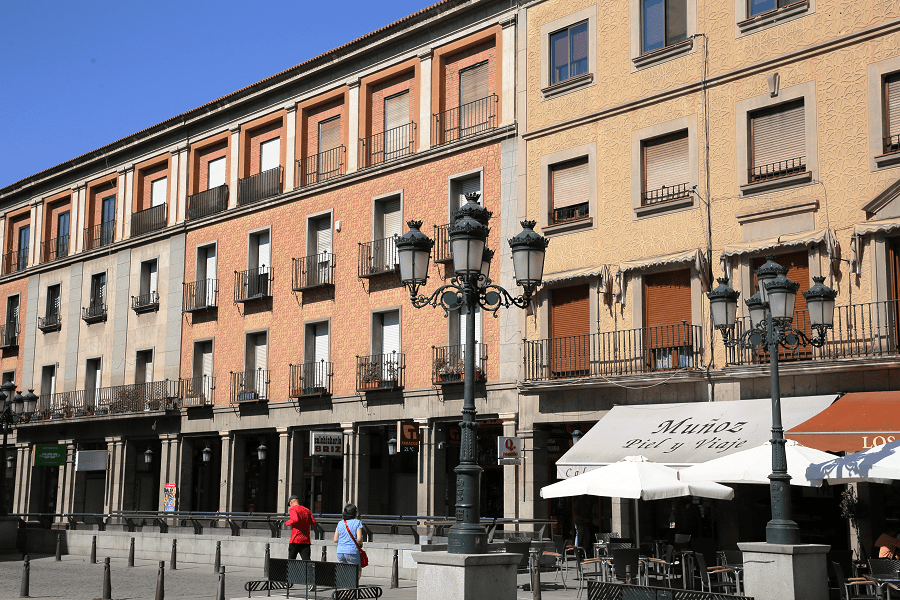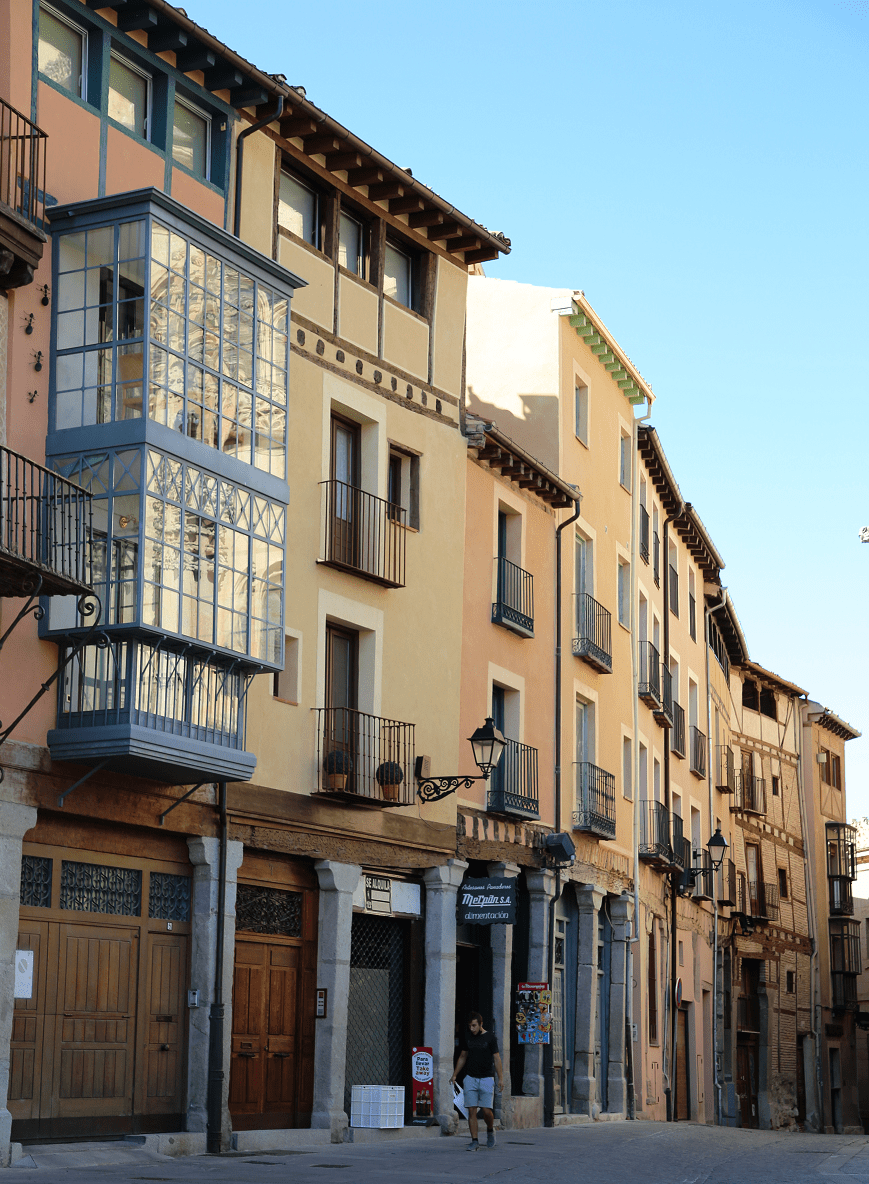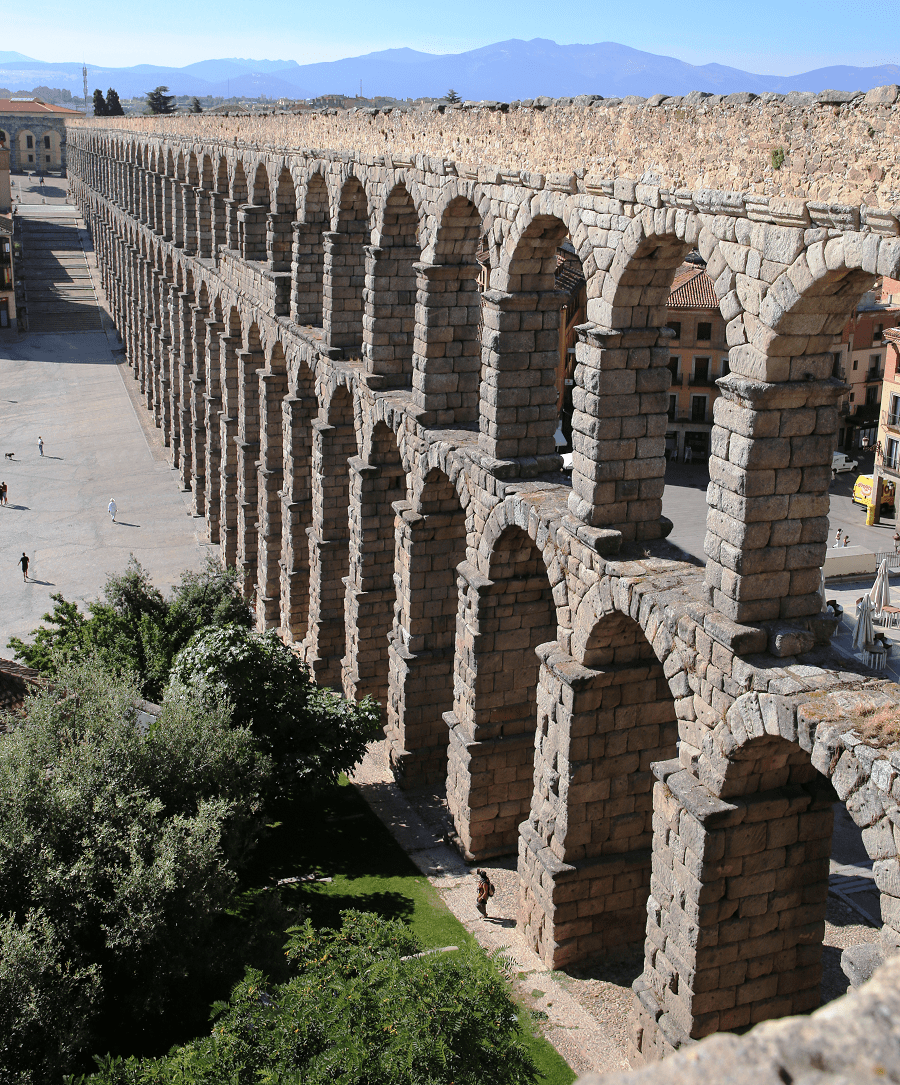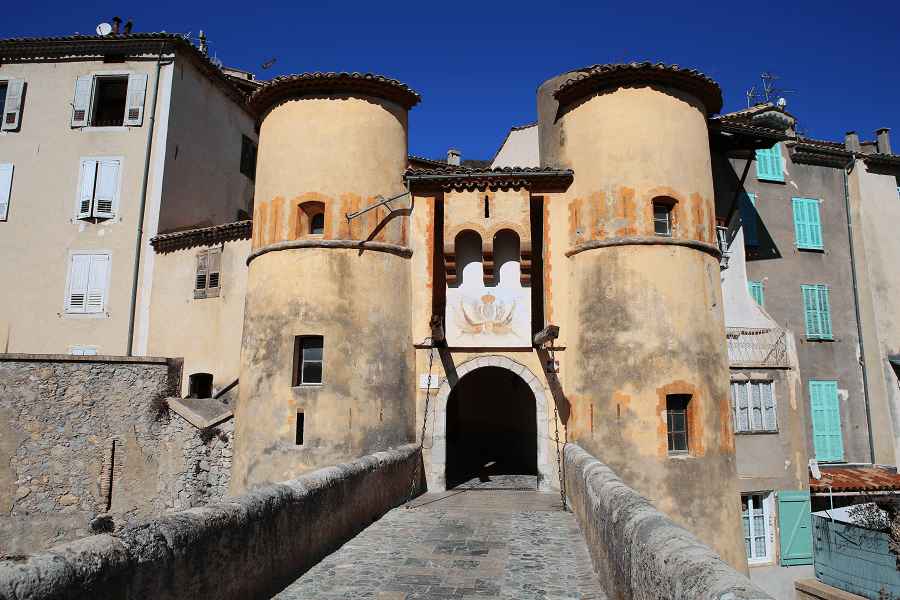Segovia is a city in the autonomous community of Castile and León, Spain. It is the capital and most populated municipality of the Province of Segovia.
The old city and the aqueduct of Segovia were declared a World Heritage Site by UNESCO in 1985. The aqueduct is considered the most important work of Roman civil engineering in Spain, and is one of the most significant and best-preserved monuments of Ancient Rome in the Iberic Peninsula.
Main attractions
The Aqueduct of Segovia is one of the best-preserved elevated Roman aqueducts and the foremost symbol of Segovia, as evidenced by its presence on the city’s coat of arms.
As the aqueduct lacks a legible inscription, the date of construction cannot be definitively determined. The general date of the Aqueduct’s construction was long a mystery, although it was thought to have been during the 1st century AD, during the reigns of the Emperors Domitian, Nerva, and Trajan.
The aqueduct once transported water from the Rio Frio river, situated in mountains 17 km from the city in the La Acebeda region. It runs 15 km before arriving in the city.
The construction of the aqueduct follows the principles laid out by Vitruvius in his De Architectura published in the mid-first century BC.
The aqueduct is built of unmortared, brick-like granite blocks. During the Roman era, each of the three tallest arches displayed a sign in bronze letters, indicating the name of its builder along with the date of construction. Today, two niches are still visible, one on each side of the aqueduct. One of them is known to have held the image of Hercules, who, according to legend, was founder of the city. That niche now contains an image of the Virgin. The other one used to hold an image of Saint Stephen, now lost.
The Alcázar of Segovia (literally “Segovia Fortress”) is a medieval castle – a World Heritage Site by UNESCO. Rising out on a rocky crag above the confluence of two rivers near the Guadarrama mountains, it is one of the most distinctive castle-palaces in Spain by virtue of its shape – like the bow of a ship. The alcázar was originally built to serve as a fortress but has served as a royal palace, a state prison, a Royal Artillery College, and a military academy since then used as a museum and a military archives building.
The Alcázar of Segovia, like many fortifications in Spain, started off as a Roman castrum, but apart from the foundations, little of the original structure remains. A Muslim era fort, which was itself largely replaced by the present structure, was built by the Berber Almoravid dynasty. The first reference to this castle was in 1120, around 32 years after the city of Segovia was conquered by the Christians (during the time when King Alfonso VI reconquered lands to the south of the Duero river down to Toledo and beyond).
The Alcázar of Segovia was one of the favorite residences of the monarchs of Castile in the Middle Ages, and a key fortress in the defence of the kingdom.
The castle also served as the French home of Sir Lancelot du Lac, Joyous Gard, in the 1967 musical film Camelot. The castle’s silhouette and overall appearance also inspired the castle in Disney’s 1937 animated classic, Snow White and the Seven Dwarves.
The Segovia Cathedral is the Roman Catholic cathedral located in the main square (Plaza Mayor). The church, dedicated to the Virgin Mary, was built in a Gothic style in the mid-16th century. The massive cathedral was built between 1525-1577 in a late Gothic style, outdated elsewhere in Europe.
The building’s structure features three tall vaults and an ambulatory, with fine tracery windows and numerous stained glass windows. The interior is characterized by unity of style (late Gothic), except for the dome, built around 1630 by Pedro de Brizuela. The Gothic vaults are 33 meters high by 50 meters wide and 105 long.
The bell tower reaches almost 90 meters. The current stone spire crowning the tower, dating from 1614, was erected after a major fire caused by a thunderstorm. The original spire, entirely Gothic, was built of American mahogany, had a pyramidal structure, and was the tallest tower in Spain.
The cathedral museum has works by Pedro Berruguete, Sánchez Coello and Van Orley, and the cathedral archives have one of the first printed books published in Spain: the Sinodal de Aguilafuente.
The walls of Segovia are the remains of the medieval city walls surrounding Segovia complete a circuit of about 2,250 metres in length, with an average height of 9 metres and an average thickness of 2.5 metres. They are built out of many different materials, with some parts of great antiquity, although most date back to the 11th and 12th centuries, which major renovations in subsequent centuries.
From the Alcázar to the gate of Santiago, there are two circular towers and a rectangular one. The Puerta de Santiago, which has a rectangular plan, has a horseshoe arch. The wall continues to the north of the city’s historic centre, dominating the Eresma River, until it reaches the gate of San Cebrián, which has a crucifix at its entrance.
From this point the wall, raised on rock, continues in an easterly direction until the former San Juan gate. This was an ornamental arch built in the 16th century, and it was demolished in 1888 due to urban needs.
The wall continues to the south and then to the west, in a section that included the Postigo del Consuelo, the Portillo de la Canaleja and the gates of San Martín, la Luna and del Sol. Continuing towards the west, one arrives at the Puerta de San Andrés, which has a square and a polygonal tower. From there the wall continues to close its perimeter at the Alcázar.
Museums
The Museum of Segovia in the Casa del Sol of the Segovian capital, is a cultural institution of the Spanish State managed by the community of Castilla y León, which guards historical pieces mainly from the province of Segovia.
Throughout its history it has had several denominations, Museum of Paintings, Museum of Fine Arts or Provincial Museum, as well as various venues from the initial one in the episcopal palace in 1842, passing through the church of San Facundo (1845) and the Casa del Hidalgo (1967), until settling in the Casa del Sol. Its affiliate museum is the Zuloaga Museum, located in the church of San Juan de los Caballeros.
The Esteban Vicente Contemporary Art Museum is a museum, which has its headquarters in the so-called Palacio de Enrique IV. It exhibits works by the painter Esteban Vicente, a native of the province. In 2017, a file was launched to declare the museum’s collection as an Asset of Cultural Interest. This collection is made up of a set of works by the artist and the permanent collection as well as the documentary and bibliographic archive that the museum houses.
The Museum of the Artillery Academy is located exactly in San Francisco number 25. Located in a military academy, the library of this museum has a number of volumes close to 50,000 copies of scientific works, in particular of mathematics, geometry, physics, astronomy, chemistry, fortifications, navigation and natural history. It can be found open from Monday to Friday and closed on Saturdays and Sundays.
The Zuloaga Museum is a cultural institution of the Spanish State managed by the Community of Castilla y León, located in Plaza de Colmenares. It is installed in the old church of San Juan de los Caballeros, abandoned at the end of the 19th century, converted into a lumberyard and garage, and which, acquired by Daniel Zuloaga in 1905, was renovated as a workshop and office.
The Machado House-Museum is a traditional house used as a pension in the 19th century and part of the 20th, located in the historic center. It was the house where the poet Antonio Machado lived between 1919 and 1932. Since the second half of the 20th century it has been administered by the Royal Academy of History and Art of San Quirce.
Among other museums are:
- Gastronomic Museum of Segovia
- Episcopal Palace Museum
- Cathedral Museum
- Machado House-Museum
Cuisine and the best restaurants
The lands of the province provide various products, starting with the most popular food, bread, or milk, the basis of the cheeses of the province of Segovia. The tender roast suckling lamb or suckling pig are part of the meat offer of the restaurants in the capital.
Among the desserts you can find donuts, puffs and, above all, the Segovian punch, with a creamy interior. Among the wines there are some produced in the province such as the Blancos de Nieva or the Reds from Valtiendas.
There are four Michelin list restaurants in the city:
- Villena, Plazuela de los Capuchinos 4, 65 EUR • Modern Cuisine
- José María, Cronista Lecea 11, 45 – 60 EUR • Traditional Cuisine, Regional Cuisine
- Juan Bravo, Plaza Mayor 9, 25 – 40 EUR • Modern Cuisine, Spanish Contemporary
- Casa Silvano-Maracaibo, Paseo de Ezequiel González 25, 38 – 60 EUR • Modern Cuisine, Traditional Cuisine
Shopping
The area around Plaza Mayor is a great spot to find a whole range of souvenirs of the city, including typical local crafts, and all kinds of gifts.
Transport and how to get to?
Nearest international airport is in Madrid.
Segovia-Guiomar railway station provides a rail connection to Madrid Chamartín and Valladolid-Campo Grande via the AVE network’s Madrid–León high-speed rail line.
Distance by car to other main cities of Castile and León and Madrid
Madrid 1 hr 12 min (91.8 km) via A-6 and AP-61
Valladolid 1 hr 22 min (117 km) via A-601
Ávila 52 min (66.0 km) via AP-51 and N-110
Palencia 1 hr 40 min (165 km) via A-601
León 2 hr 48 min (257 km) via N-601 and A-601
Salamanca 1 hr 47 min (172 km) via A-50
Burgos 2 hr 7 min (199 km) via A-1 and N-110
Soria 2 hr 24 min (189 km) via N-110
Zamora 2 hr 4 min (190 km) via A-11, A-6 and CL-605
Main information
Area: 163 sq. km (municipality)
Coordinates: 40°56′53″N 4°07′06″W
Population: 52 057
Languages: Spanish
Currency: Euro
Visa: Schengen
Time: Central European UTC +1





